How to eat and what you can eat during Lent is a very important moment, as spring begins, and the body is rebuilt to new conditions. At such moments, he needs vitamins, so the recipes for dishes that will be served during fasting must be chosen thoroughly.
Pros and cons of fasting
The main disadvantage is that it is forbidden to eat meat, fat, fish, chicken and quail eggs, milk, cottage cheese, butter and so on. It is these products that can supply our body useful substances and vitamins. In addition, along with fish, vitamin D enters the body, which makes our bones stronger. Of course, during fasting, a person receives much less calcium, but it can be easily replenished.
Fasting excludes the possibility of consuming protein, so for a certain time a person is deprived of tryptophan and some amino acids. This can affect mood, immunity and activity.
It is not necessary to strictly observe the fast, this is the privilege of the ministers of the Church, the rest is enough for a certain time to adhere to less stringent rules, because in the first place is spiritual cleansing.
Of course, there are pluses, the diet helps to cleanse the body of toxins, this is a reason to diversify your diet. natural products. Eating vegetables, mushrooms, nuts is encouraged, various cereals, berries, honey, all this is very useful for a person, especially for those who live in big cities. Vegetable food is rich in potassium, vitamin C, B, practically does not contain cholesterol and fats, which is why it is so necessary for residents of megacities who are used to eating fried and baked foods.
What foods to include in your diet during Lent
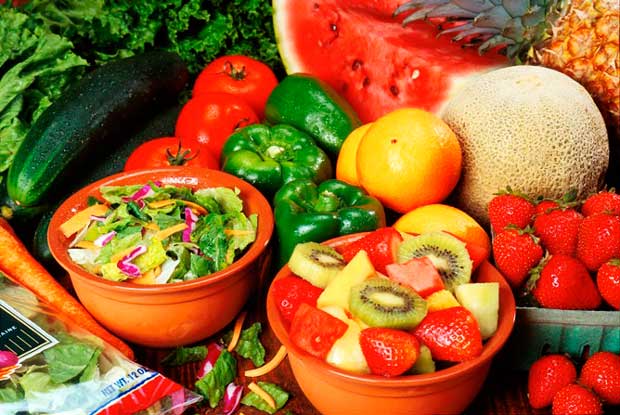
- Since any source of protein is excluded from the diet, it can be replaced. Now in stores there are many products - substitutes, for example soy milk, meat, yogurt. In addition, you can eat beans, nuts, a variety of cereals, they are able to fill the protein deficiency in the body in a short time.
- The most important foods that help replenish energy are cereals on the water and potatoes. Every housewife should have recipes lean cereals because they are very useful and easy to prepare.
- Vegetable oils are equally important. They can be added to any dishes or salads.
- During fasting, it is allowed to eat fruits and vegetables, so you can safely consume at least 500 grams every day.
- In order for the mood to always be at its best and to avoid spring depression, great option breakfast will be boiled Brown rice with fruits, lentils or bananas.
- Do not spare money and go to the pharmacy for a vitamin and mineral complex. It will help improve health and immunity.
- And of course, we must not forget about water. Daily use A few glasses of pure water will help avoid digestive problems that can occur during Lent.
- The range of permitted sweets will be much smaller than usual. You can limit yourself to nuts, dried fruits and honey.
- It is better to have recipes for the first and second on hand, since you will need to eat at least 4 times a day. It is important to chew food thoroughly, and slightly reduce portions. Thus, we will be able to monitor our figure while dieting.
- If you do not like any certain products that are allowed in the post, then you should not force yourself.
- After the fast is over, you need to be as careful as possible when taking meat, fish, dairy and fermented milk products because the body has already become accustomed to it. You need to be more careful with your usual diet. It is important to remember that it will be very difficult for children, the elderly and people with digestive problems to start fasting, so the diet can be slightly simplified. Now let's take a look at the recipes. various dishes, which will become the main decoration of the table during Lent.
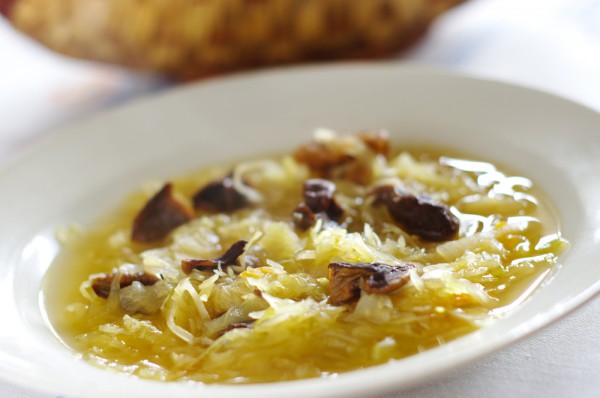 The most important thing on the table is the first course, so you need to cook it according to all the rules, observing the nuances.
The most important thing on the table is the first course, so you need to cook it according to all the rules, observing the nuances.
Ingredients:
- 290 gr. homemade sauerkraut
- 240 gr. fresh mushrooms
- a little black peppercorns
- 90 gr. fresh carrots
- 90 gr. fresh onion
- 20 ml. tomato paste
- bay leaf
- greens to taste
- salt, spices if desired
- 290 gr. young potatoes
Cooking:
- Can be used vegetable broth or water, also prepare the base on a cube, it all depends on taste preferences.
- Wash potatoes, peel and cut into not very thick strips. Transfer it to boiling, salted water.
- While the potatoes are cooking, chop the onions and carrots, lightly fry in vegetable oil until appetizing, golden brown.
- Chop the mushrooms, you can leave large pieces if desired, send to fry. After a few minutes, add the cabbage, after squeezing the liquid from it.
- When the vegetables with mushrooms are cooked, put them with a small amount of high-quality tomato paste into the broth with potatoes and cook until the cabbage soup is fully cooked.
- You can add spices if you like. Bay leaf, black ground pepper taste.
Of course, there are some nuances in the preparation of this dish. Mushrooms are known to have a richer flavor when added to soups dried, so don't be afraid to substitute. fresh mushrooms. The cooking process will also change a little: before sending them to the broth, you need to pour warm water for a few hours to soften slightly.
Nutrition during fasting is no less important aspect than spiritual cleansing, therefore, this should be given a lot of time and attention.
Lenten Solyanka
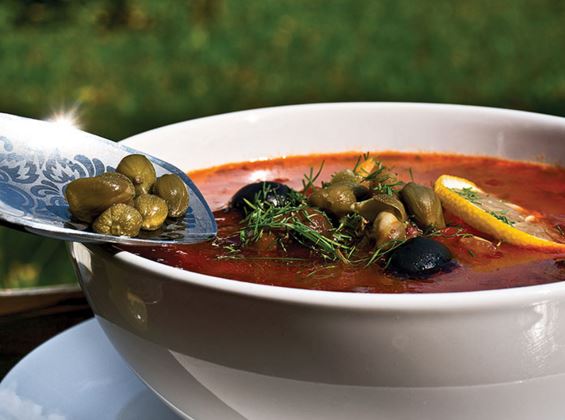 Recipes for dishes that can be consumed during Lent can also be found on the Internet, but in this article we have collected the most delicious and simple dishes.
Recipes for dishes that can be consumed during Lent can also be found on the Internet, but in this article we have collected the most delicious and simple dishes.
Ingredients:
- 180 gr. pickled cucumbers
- 180 gr. fresh tomato
- 10 gr. flour
- 60 gr. black olives
- 90 gr. white onion
- 90 gr. fresh carrots
- 180 gr. fresh or dried mushrooms
- salt, black pepper to taste
- greens if desired
Cooking:
- Put the broth on the fire, add salt and bring to a boil. While the water is heating, prepare the rest of the ingredients.
- Cut pickled cucumbers into strips, preferably thin, but so that they keep their shape and do not fall apart.
- Finely chop the onion, grate the carrots and send to fry in vegetable oil until golden brown.
- Soak mushrooms beforehand if dried mushrooms are used, then transfer to vegetables and fry for about 5-10 minutes.
- Add chopped pickled cucumbers to the pan and stew a little, then send to the broth along with chopped olives.
- Pour a little flour into a dry frying pan and heat it up to a delicate, creamy color and a light nutty aroma, then sift and pour into the hodgepodge, cook it for another 10 minutes until fully cooked. If desired, add black pepper, herbs and seasonings.
Having considered the soups that can be consumed during Lent, you can move on to the main dishes. It is in the first week that dieters have a particularly difficult time, because the body is not used to being deprived of meat or dairy products, so it is important to thoroughly approach nutrition during fasting and try to cook food that will be saturated with vitamins and nutrients.
Carrots with honey
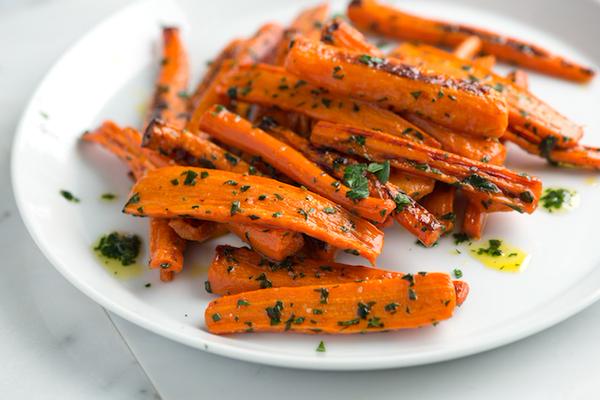 Surely, this combination will seem strange to you, but in fact, carrots baked with honey are very tasty dish especially if it's cooked right.
Surely, this combination will seem strange to you, but in fact, carrots baked with honey are very tasty dish especially if it's cooked right.
Ingredients:
- 690 gr. fresh carrots
- 290 ml. natural orange juice (can be replaced with store-bought)
- 30 ml. natural honey
- 50 gr. leek
- 1 garlic clove
- some spices to taste
- carnation
- salt, sugar, ground black pepper
Cooking:
- Peel the carrots and put to boil until cooked or half cooked in salted water. Cool, cut into not very thin rings.
- Prepare sauce by mixing honey Orange juice and finely minced garlic.
- Chop the leek into thin strips, add to the sauce. You can also send chopped herbs and spices to taste there.
- Pour ready mix carrots, mix thoroughly and transfer to a baking sheet.
- Preheat the oven to 180 degrees and send the dish to bake for 20 minutes until fully cooked.
It must be said right away that carrots with honey are quite unusual dish, so only lovers of such exquisite combinations will like it, but it is definitely worth the effort and time spent. If you like to bake vegetables in your sleeve, then you can slightly change the cooking method, and thereby save time. In this case, you don’t have to boil the carrots, you just need to cut them, mix with the sauce and send them to bake in the sleeve.
Also on the Internet you can find recipes for cooking carrots in a slow cooker, this will be needed if you have digestive problems. This method will help preserve more vitamins and nutrients in the product. Of course, recipes for second courses during Lent are very important, but it's time to move on to desserts. The list of sweets will turn out to be much smaller, because the products from which the dessert will turn out can be counted on the fingers, but if you show imagination, you can pleasantly surprise your family and guests.
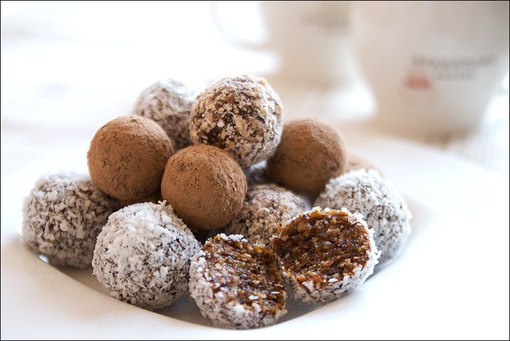 Such a dessert is worthy of attention, do not hesitate to cook it during Lent.
Such a dessert is worthy of attention, do not hesitate to cook it during Lent.
Ingredients:
- handful of hazelnuts
- 75 gr. dried apricots
- 75 gr. prunes
- 75 gr. any dried fruit
- sugar if desired
- water if needed
Cooking:
- Cut prunes and dried apricots into thin strips and add a small amount warm water, mix, add granulated sugar if desired and leave to get wet.
- Preheat the pan and lightly toast the nuts, then remove the skin from them.
- Transfer the prunes, dried apricots and dried fruits to the blender and chop.
- Divide the mass into as many pieces as there are nuts, after which each nut is pressed into the mass and give the candy a neat, round shape.
Of course, recipes can be changed at your discretion, add fruits, berries, it all depends on your imagination. Instead of hazelnuts, you can use almonds, ordinary peanuts or cashews, but they must be roasted first so that you can easily remove the skin later.
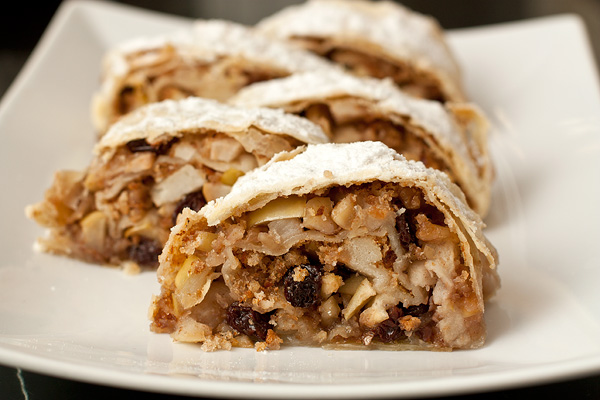 The recipes for the classic apple strudel usually include butter and eggs, but all this is missing here, so you can safely call this dish lean and eat during Lent.
The recipes for the classic apple strudel usually include butter and eggs, but all this is missing here, so you can safely call this dish lean and eat during Lent.
Ingredients:
- 380 gr. wheat flour
- 140 ml. water
- a little olive oil
- some vinegar
- 4 medium apples
- 60 gr. raisins
- some walnuts
- some almonds
- 1 banana
- cinnamon
- some cranberries if desired
Cooking:
- Mix water, salt and vinegar. Sift the flour through a sieve several times, then pour it into the water, knead the dough, gradually pouring in the olive oil.
- The dough should be left for a while while the rest of the ingredients are being prepared. Peel apples, cut into pieces.
- Grind nuts, rinse raisins properly, mix everything in one container, add cinnamon.
- Roll out the dough very thinly, lay out the filling and pinch the edges. Bake until fully cooked.
- While the strudel is in the oven, prepare the syrup.
- Mix cranberries with a banana, if desired, you can add any sweet syrup to taste, transfer the mass to a blender and grind until smooth.
- Put the saucepan on the fire with the syrup, bring it to a boil, after which you can serve it with strudel.
It is very important that there are no seeds or any lumps in the sweet syrup, so before serving, you need to rub it through a sieve several times. In addition, instead of cranberries or bananas, you can use any other fruits and berries, in any case it will turn out very tasty.
All these recipes are great for Lent, the dishes will delight your family and friends.
Great Lent is the most strict and significant of all fasts.
On all days of fasting, smoking and drinking are prohibited. alcoholic drinks. You can not eat animal products (meat, fish, milk and eggs), rich (white) bread, sweets, buns, mayonnaise. Allowed only plant foods (fruits, vegetables, dried fruits), pickles (sauerkraut, pickled and pickled cucumbers), crackers, dryers, tea, mushrooms, nuts, black and gray bread, kissels, cereals on the water. And on the feasts of the Annunciation of the Most Holy Theotokos and Palm Sunday, it is allowed to eat fish.
In the first and last week, fasting is the strictest. Complete abstinence from food is accepted on Clean Monday. On Friday of the first week, you can only eat kolivo (boiled wheat sweetened with honey or sugar).
The rest of the time: Monday, Wednesday, Friday - dry eating (water, bread, fruits, vegetables, compotes); Tuesday, Thursday - hot food without oil; Saturday, Sunday - food with vegetable oil.
But giving up certain types of food is not the main purpose of fasting. Its main purpose is to spiritually elevate a person. Bodily cleansing must be combined with the transformation of the soul. “True fasting is the removal of evil, the curbing of the tongue, the putting off of anger, the taming of lusts, the cessation of slander, lies, perjury.”
Reasonable abstinence from food in fasting is good for the body. But the church allows the sick, the elderly, and those who have not eaten regularly during the year (for example, low-income families) not to fast. But it is best to get permission from the priest. And if this is not possible, think: will fasting harm your health? After all, a person who deliberately harms his health commits a mortal sin.
For the period of fasting, our ancestors canceled the usual amusements, baked “tuzhik bread” (“I mourn for abundant food”). Everyday food utensils were replaced by “watchmen” made of clay.
BREAKFASTS
For breakfast, you can eat muesli (on water or juice).
Try:
Muesli: Boil (do not boil) cereals or cereal mixture. Put prepared chopped walnuts, honey or sugar, prunes, raisins, you can dried apricots, figs. Cover with a lid and let stand for 5 minutes.
Buckwheat flakes with sugar
Semolina porridge (thin) with honey
fried semolina(lightly brown semolina in a pan before cooking,
stirring constantly) with sugar or salt.
Pumpkin porridge: Boil rice until half cooked. Add the same amount of grated pumpkin. Cook so that the porridge comes out semi-liquid. At the end, you can add raisins, cinnamon. Sweeten.
WHAT IS AT WORK
In general, it is hard to stick to the post at the workplace. But at our work they found a way out, a little funny - they made vegetable shawarma. Bought Korean carrot brought with them sauerkraut they added fresh vegetables, wrapped the whole thing in pita (thin) rolled up and ate. In general, you can take the same crackers, bagels, nuts, seeds, dried bananas, jam, sea kale(at worst) and salads.
During Great Lent, for the first two and a half days (until the liturgy of the third day), those who are strong do not eat anything except the morning prosphora with holy water. Others eat only bread with sweet tea. Some eat, as in the following days, food without oil. The same strict and last - passionate
week (week). On the remaining days - Mon, Tue, Wed, Thu, Fri of the following weeks - they eat food without oil, on Sat and Sun - food with oil.
Annunciation - fish, caviar, oil and wine are allowed at the meal.
Lazarus Saturday - fish caviar, wine (and oil) are allowed.
Palm Sunday - fish, caviar, wine (and oil).
Passion Week. From Fri to Sun (morning) - the same as the first days. And in the morning, after the liturgy, everything is possible - Easter! - but they start with a consecrated egg, Easter (curd, not baked) and Easter cake (baked butter dough with dried fruits and spices). At the same time, food, as always, is blessed (at least baptized) and does not overeat.
The first thing to do is a base of fried onions and carrots, you can add ketchup or tomato paste then the soup will be tastier. AT lean borscht or cabbage soup to improve the taste, you can add bell pepper. Saves great pea soup or bean soup, mushroom soups, sorrel soup. Likewise for density lean soups usually add cereals (rice, pearl barley).
Try:
Soup with pumpkin: boil potatoes, add the same amount of pumpkin, the same amount of onion. Greens - in a bowl. Serve with toasted bread.
Soup with noodles: a lot of onions, carrots. Noodles at the end. Greens in bowls. Soup is better to eat immediately, before the noodles become sour.
Potato puree soup: boil potatoes, grind separately into a smooth puree, combine with potato broth, add crushed garlic, dill. Maybe black pepper. Serve with croutons. You can add a little wild garlic instead of garlic.
Soup with cereals: boil potatoes, add any cereal (buckwheat, rice, millet ...), a lot of onions, carrots and other roots to taste (parsley, parsnip, celery). Garlic, greens in plates. You can add a little tomato (preferably not pasta, but homemade, or ketchup, such as “Veres - sauce with
mushrooms"). Instead of garlic, you can use wild garlic.
French soup: do not boil the potatoes, but cook until tender; green peas (preferably frozen, but you can also canned), white or cauliflower cabbage, carrots, onions. You can add broken asparagus. Greens - in a bowl.
Soup with beans: boil beans, onions; add 2 tomatoes (from spin) or homemade tomato juice, boil. Parsley, (ramson) in plates.
Vegetable pickle: boil potatoes, rice, carrots, then parsley, turnips (straws), leeks, finely chopped pickles without peel. Fresh parsley in bowls. Serve with toasted bread.
Soup with mushrooms: mushrooms, onions, carrots, black pepper - boil. Add finely chopped potatoes, season with flour (separately dilute the flour in cold water and pour into the soup in a thin stream). At the end - greenery, laurel. sheet.
Soup with peas: boil potatoes, then onions, carrots and how many potatoes, the same amount green peas. Greens in bowls.
Sweet soup: Boil crumbly rice, cook dried fruit compote, sweeten. Pour rice compote with pieces of dried fruit. Eat cold. (Serve cold in summer).
SECOND DISHES
The most delicious, in my opinion, lean dish - fried potatoes with sauerkraut. Potatoes will most likely be the main food: French fries, mashed potatoes, potato cutlets, potatoes with gravy, baked potatoes ... In short, everything that used to be a side dish is suitable for your main meal: green peas, beans (in jars with sauce), corn. Fried mushrooms quite a substitute for meat. If you are already tired of everything, remember the vegetable stew and hodgepodge. If it is immediately clear what the hodgepodge can be from, then in vegetable stew You can put in just about anything you can get your hands on. You can add nuts (walnuts or hazelnuts) to any dish when cooking - this is both tastier and more satisfying. You can buy frozen vegetables for future use (broccoli, Brussels sprouts, green beans, mixed vegetables).
Try:
Olive Noodles: Any pasta boil, wash cold water, add juice from olives there, cut the olives themselves, tomato or ketchup like “Veres - mushroom sauce“, garlic or wild garlic, basil (dried or fresh). When possible, grow well there. butter, grated cheese. Instead of noodles, you can cook green beans.
Sweet beans: Boil beans with onions. Make from a decoction sweet sauce: Stir flour into the cooled broth, brew, add sugar.
Stewed potatoes with peas or mushrooms: boil 3 parts of potatoes until half cooked, add 4 parts of diced carrots, 1 part of chopped celery roots, cook for half an hour; then 1 part onion, 1 part mushrooms (fresh or dried and boiled) or peas (any: fresh, frozen, dried and boiled) cook for 5 minutes. Greens in bowls.
Monastic beans: Boil the beans until half cooked, add a lot of finely chopped onions, cook for another half hour. Greens in bowls.
Stewed cabbage: Stew until softened 1 kg of cabbage, add red ground pepper, 2 cf. potatoes and simmer until done. Pour in 200g tomato juice(or fresh tomatoes, or canned). Dill at the end. Can be stewed with bell pepper(ice cream).
Cabbage with mushrooms: Boil the mushrooms until half cooked, finely chop. Simmer the onions in a small amount mushroom broth, then chopped cabbage, add red pepper, then mushrooms. Make a sauce from the remaining broth (dissolve the flour in the broth, add spices, cook until thickened).
Season the prepared cabbage with sauce and herbs.
Salad with corn (peas): Boil potatoes in their skins. Cut into small cubes, add finely chopped onion (preferably green, you can wild garlic), pickled (pickled) cucumbers (zucchini) without skin, canned corn with juice (peas).
Add some cucumber marinade. Greens. It is possible with olives and juice from olives.
Salad with beetroot: bake 2 beets, grate coarsely; 2 pickled cucumbers without skin finely cut into cubes, 1 onion cut into half rings. Season with sugar, lemon juice, cumin, brine. Sprinkle with green onions.
Carrot salad with apples: Coarsely grate 3 carrots; 2 apples cut into strips. Soak raisins, mix with apples and carrots, season with honey diluted with water. Can you sprinkle an apple? lemon juice(1 tsp) so as not to darken.
DRINKS AND DESSERTS
Juices, kissels, compotes, tea, fruit drinks. For sweets, you can cook such a baby wonderful dish- apple and carrot puree. Remember how it used to crackle behind your ears? Or other fruit purees.
Try:
Fanta: Pour the zest from 3-5 oranges with 1-1.5 liters of warm water, add sugar to taste and let it brew overnight. Strain. Add juice of 0.5-1 lemon.
Happy posting everyone!
217092
PCEtLSBZYW5kZXguUlRCIFItQS0yMzEzODctMTAgLS0+DQo8ZGl2IGlkPSJ5YW5kZXhfcnRiX1ItQS0yMzEzODctMTAiPjwvZGl2Pg0KPHNjcmlwdCB0eXBlPSJ0ZXh0L2phdmFzY3JpcHQiPg0KICAgIChmdW5jdGlvbih3LCBkLCBuLCBzLCB0KSB7DQogICAgICAgIHdbbl0gPSB3W25dIHx8IFtdOw0KICAgICAgICB3W25dLnB1c2goZnVuY3Rpb24oKSB7DQogICAgICAgICAgICBZYS5Db250ZXh0LkFkdk1hbmFnZXIucmVuZGVyKHsNCiAgICAgICAgICAgICAgICBibG9ja0lkOiAiUi1BLTIzMTM4Ny0xMCIsDQogICAgICAgICAgICAgICAgcmVuZGVyVG86ICJ5YW5kZXhfcnRiX1ItQS0yMzEzODctMTAiLA0KICAgICAgICAgICAgICAgIGhvcml6b250YWxBbGlnbjogZmFsc2UsDQogICAgICAgICAgICAgICAgYXN5bmM6IHRydWUNCiAgICAgICAgICAgIH0pOw0KICAgICAgICB9KTsNCiAgICAgICAgdCA9IGQuZ2V0RWxlbWVudHNCeVRhZ05hbWUoInNjcmlwdCIpWzBdOw0KICAgICAgICBzID0gZC5jcmVhdGVFbGVtZW50KCJzY3JpcHQiKTsNCiAgICAgICAgcy50eXBlID0gInRleHQvamF2YXNjcmlwdCI7DQogICAgICAgIHMuc3JjID0gIi8vYW4ueWFuZGV4LnJ1L3N5c3RlbS9jb250ZXh0LmpzIjsNCiAgICAgICAgcy5hc3luYyA9IHRydWU7DQogICAgICAgIHQucGFyZW50Tm9kZS5pbnNlcnRCZWZvcmUocywgdCk7DQogICAgfSkodGhpcywgdGhpcy5kb2N1bWVudCwgInlhbmRleENvbnRleHRBc3luY0NhbGxiYWNrcyIp Ow0KPC9zY3JpcHQ+ PGRpdiBzdHlsZT0id2lkdGg6MTAwJTttYXgtaGVpZ2h0OjIwMHB4O3BhZGRpbmc6MC41JSI+PCEtLSBZYW5kZXguUlRCIFItQS0yMzEzODctNCAtLT4NCjxkaXYgaWQ9InlhbmRleF9ydGJfUi1BLTIzMTM4Ny00Ij48L2Rpdj4NCjxzY3JpcHQgdHlwZT0idGV4dC9qYXZhc2NyaXB0Ij4NCiAgICAoZnVuY3Rpb24odywgZCwgbiwgcywgdCkgew0KICAgICAgICB3W25dID0gd1tuXSB8fCBbXTsNCiAgICAgICAgd1tuXS5wdXNoKGZ1bmN0aW9uKCkgew0KICAgICAgICAgICAgWWEuQ29udGV4dC5BZHZNYW5hZ2VyLnJlbmRlcih7DQogICAgICAgICAgICAgICAgYmxvY2tJZDogIlItQS0yMzEzODctNCIsDQogICAgICAgICAgICAgICAgcmVuZGVyVG86ICJ5YW5kZXhfcnRiX1ItQS0yMzEzODctNCIsDQogICAgICAgICAgICAgICAgaG9yaXpvbnRhbEFsaWduOiBmYWxzZSwNCiAgICAgICAgICAgICAgICBhc3luYzogdHJ1ZQ0KICAgICAgICAgICAgfSk7DQogICAgICAgIH0pOw0KICAgICAgICB0ID0gZC5nZXRFbGVtZW50c0J5VGFnTmFtZSgic2NyaXB0IilbMF07DQogICAgICAgIHMgPSBkLmNyZWF0ZUVsZW1lbnQoInNjcmlwdCIpOw0KICAgICAgICBzLnR5cGUgPSAidGV4dC9qYXZhc2NyaXB0IjsNCiAgICAgICAgcy5zcmMgPSAiLy9hbi55YW5kZXgucnUvc3lzdGVtL2NvbnRleHQuanMiOw0KICAgICAgICBzLmFzeW5jID0gdHJ1ZTsNCiAgICAgICAgdC5wYXJlbnROb2RlLmluc2VydEJlZm9yZShzLCB0KTsNCiAgICB9KSh0 aGlzLCB0aGlzLmRvY3VtZW50LCAieWFuZGV4Q29udGV4dEFzeW5jQ2FsbGJhY2tzIik7DQo8L3NjcmlwdD48L2Rpdj4= PGRpdiBzdHlsZT0id2lkdGg6MTAwJTttYXgtaGVpZ2h0OjIwMHB4O3BhZGRpbmc6MC41JSI+PCEtLSBZYW5kZXguUlRCIFItQS0yMzEzODctNSAtLT4NCjxkaXYgaWQ9InlhbmRleF9ydGJfUi1BLTIzMTM4Ny01Ij48L2Rpdj4NCjxzY3JpcHQgdHlwZT0idGV4dC9qYXZhc2NyaXB0Ij4NCiAgICAoZnVuY3Rpb24odywgZCwgbiwgcywgdCkgew0KICAgICAgICB3W25dID0gd1tuXSB8fCBbXTsNCiAgICAgICAgd1tuXS5wdXNoKGZ1bmN0aW9uKCkgew0KICAgICAgICAgICAgWWEuQ29udGV4dC5BZHZNYW5hZ2VyLnJlbmRlcih7DQogICAgICAgICAgICAgICAgYmxvY2tJZDogIlItQS0yMzEzODctNSIsDQogICAgICAgICAgICAgICAgcmVuZGVyVG86ICJ5YW5kZXhfcnRiX1ItQS0yMzEzODctNSIsDQogICAgICAgICAgICAgICAgaG9yaXpvbnRhbEFsaWduOiBmYWxzZSwNCiAgICAgICAgICAgICAgICBhc3luYzogdHJ1ZQ0KICAgICAgICAgICAgfSk7DQogICAgICAgIH0pOw0KICAgICAgICB0ID0gZC5nZXRFbGVtZW50c0J5VGFnTmFtZSgic2NyaXB0IilbMF07DQogICAgICAgIHMgPSBkLmNyZWF0ZUVsZW1lbnQoInNjcmlwdCIpOw0KICAgICAgICBzLnR5cGUgPSAidGV4dC9qYXZhc2NyaXB0IjsNCiAgICAgICAgcy5zcmMgPSAiLy9hbi55YW5kZXgucnUvc3lzdGVtL2NvbnRleHQuanMiOw0KICAgICAgICBzLmFzeW5jID0gdHJ1ZTsNCiAgICAgICAgdC5wYXJlbnROb2RlLmluc2VydEJlZm9yZShzLCB0KTsNCiAgICB9KSh0 aGlzLCB0aGlzLmRvY3VtZW50LCAieWFuZGV4Q29udGV4dEFzeW5jQ2FsbGJhY2tzIik7DQo8L3NjcmlwdD48L2Rpdj4=
What can you eat in the post. Strict and sparing diet.
Orthodox Christians keep great post to express your love for Christ. Forty-eight days of bodily and spiritual fasting expresses the humility and repentance of the laity. In 2016 it starts on March 14th and will last until April 30th.
Fast food rules
The whole period is divided into Forty and Holy Week. The first forty days are devoted to the parable of the awakening of the Savior on a lonely mountain near Jericho. The last, Holy Week, is designed to remind believers of his last seven days. She celebrates the holiday bright resurrection Christ (Easter).
Humility of the flesh is the first step to humble the spirit. When embarking on a limited diet, one must also restrain oneself spiritually. During abstinence, Christians are cleansed of bad emotions, try not to experience envy, anger and other negative emotions. Without spiritual purity, the whole ceremony becomes just a diet.
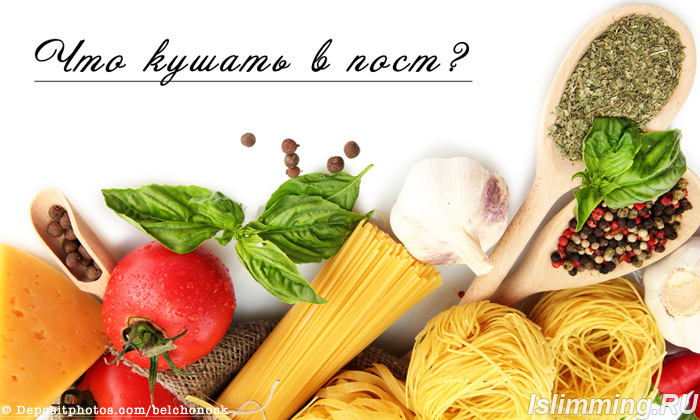
In addition, dietary rules may be relaxed for health reasons. Patients, the elderly and pregnant women do not have to be completely strict. The exemptions also apply to children.
Such a serious dietary restriction can adversely affect the health of children under 16 years of age. For people whose work involves hard physical labor, cutting the diet is also highly discouraged.
We eat vegetables and fruits in fasting!
Vegetables and fruits are the first food in fasting. Mushrooms, berries and nuts are also not prohibited. The key is to keep the food simple. Fasting with delicacies, although permitted, is akin to slyness. Until the first spring crops are ripe, blanks will come in handy. Jams, pickles and other vegetable rolls can diversify the table.
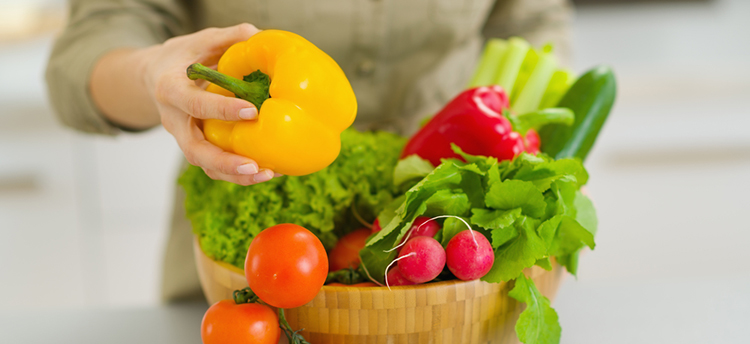
Dried fruits and nuts make an excellent tasty and nutritious base for many dishes. By combining prunes or dried apricots and walnuts or peanuts, you can make an excellent dessert mix. Especially if you fill it with honey. This option is quite suitable for the role of a lunch snack at work. Nuts will renew energy reserves, while dried fruits and honey will provide flavor.
Do not forget about different root crops. Only from potatoes and beets you can think of a lot of delicious and at the same time simple meals. onions and carrots, cauliflower and broccoli open wide prospects for culinary fantasies.
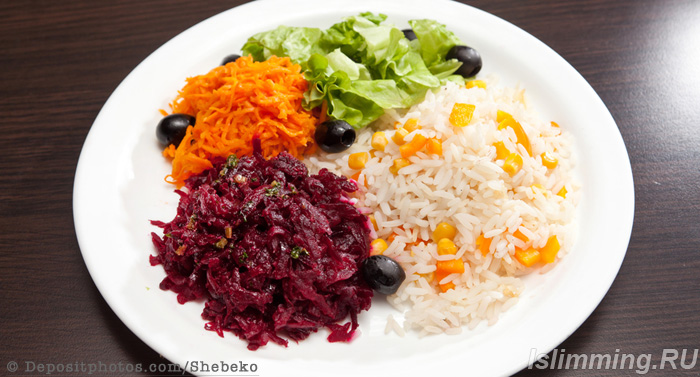
The whole variety of vegetables will come to the aid of the Christian. Legumes, peppers, eggplant, zucchini, greens are available in supermarkets all year round.
HOWEVER: Do not overeat or eat too salty, sugary foods. It is also better not to get carried away with spices. The feast of the belly offends spiritual humility.
In cooking, you cannot, except on special days, use even vegetable oil. Therefore from fried foods better to refuse. Stewing, boiling and steaming will replace the pan. Grill too good way cooking vegetables. Nothing stops you from brewing delicious broth from vegetables and on its basis to make a bowl with porridge.
Cereals and legumes in the post
Rice, buckwheat and wheat derivatives will be a good basis for the table. Even porridge cooked on water can be varied with vegetables. Porridges are generally universal in this regard. If you add jam or dried fruits to them, there will be an excellent sweet food. Steamed vegetables are suitable for a side dish of porridge.

Porridge helps a lot and gives satiety for several hours.
Mushrooms, dried fruits, nuts, vegetables and cereals in their diversity give rise to great amount recipes. In fact, the variety of dishes on each table is limited only by the imagination and rigor of each. You just need to remember that the use of dairy products is prohibited. On non-strict days, porridge can be seasoned with vegetable oil.
Legumes will be a good source of energy at this time. Peas, beans and beans are a great source required amount squirrel. Nuts will also come to the aid of legumes.
Soy opens up a wide space for culinary activities. Combinations of bean side dishes and vegetable snacks can be enough to fill you up.
HOWEVER: Soy meat and milk are akin to self-deception. Humility implies self-restraint, and the use of these products is like deceit. Can be given soy products children, it is more difficult for them to cope with their desires. But, this is more of a personal matter.
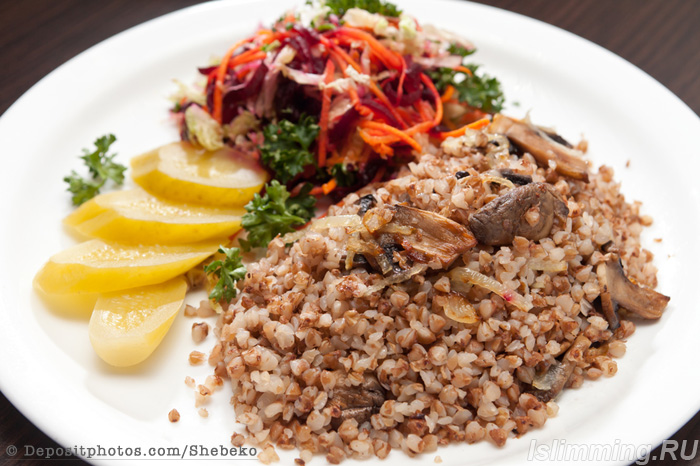
Lentil stews and simply boiled lentils are a good substitute for meat. The protein structure of legumes is identical to that of meat, so even on ordinary days they can completely replace it. And if you combine them with eggplant and mushrooms, then you can forget about meat at all.
Confectionery and bakery products
The use of bread and pastries is also not limited by the charter. The main thing is that dairy products or eggs are not used for their preparation. On non-strict days, bread can be flavored with vegetable oil.
In modern cooking there are many diet recipes sweets. Various desserts without sugar and dairy products will help diversify the menu. In addition, honey is allowed throughout all weeks.
With it, you can not only sweeten porridge, but also cook a full-fledged pie even without the use of eggs and milk. Compote, jelly or uzvar with a small muffin will be a good end to the meal. But here, too, it is better not to overdo it.

To flour products you can also include pasta. She is not restricted in any way. The whole variety of spaghetti, pasta and noodles is available for consumption. In recipes Italian cuisine can be found great recipes pasta with vegetable snacks and sauces.
HOWEVER: The consumption of eggs and foods containing them is prohibited. But many of them have alternatives. For example, the composition of ordinary mayonnaise includes yolks, but there are also its lean counterparts prepared without using them. In addition, any other vegetable sauces, for example, ketchup or mushroom. The main thing is not to be zealous with spices.
Meals on non-strict days.
On relaxation days, you can eat fish and add vegetable oil to food. Observing all the strictness of nutrition, you can eat fish only two days out of forty-eight - on the Annunciation and Palm Sunday. Even taking advantage of this opportunity, it is better not to fry the fish. Boiled or stewed, baked or cooked in the ear fish will be a good solution.
On non-strict days, a little wine is allowed at dinner. Half a glass, no more. In addition, you can consume other seafood, as long as they do not contradict the concept of abstinence. Eating expensive oysters, for example, does not fit well with the concept of humility.
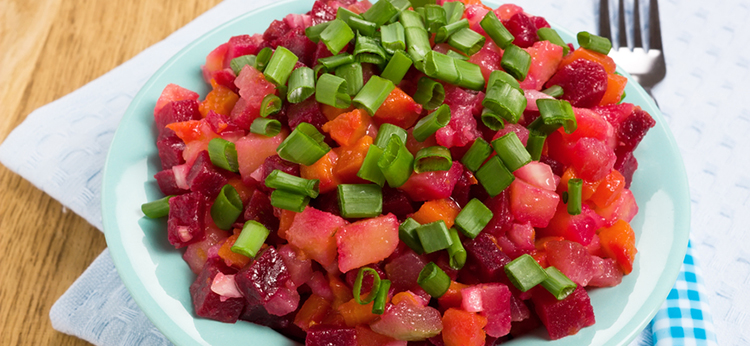
Somewhat mercantile, but for women this is a great opportunity to lose weight. A strict nutrition schedule has a beneficial effect on metabolic processes. During its observance, the body undergoes purification and is saturated with useful substances from plant foods. Promotes weight loss and emotional hygiene, observed with proper fasting.
What is not allowed in the post?
There are many restrictions in gastronomic terms. It is forbidden to eat:
- Meat and all derived products (sausages, ham, smoked meats, etc.);
- Dairy products (kefir, yogurt, cheese, butter, etc.);
- Eggs and products containing them;
- Food with too intense taste (salty, sweet, spicy);
- Fish (except for two days);
- Fatty sweets (chocolate, muffin, fast food);
- Vegetable oil (except non-strict days) and animal fats;
- Alcohol (except perhaps half a glass of red wine on non-strict days).
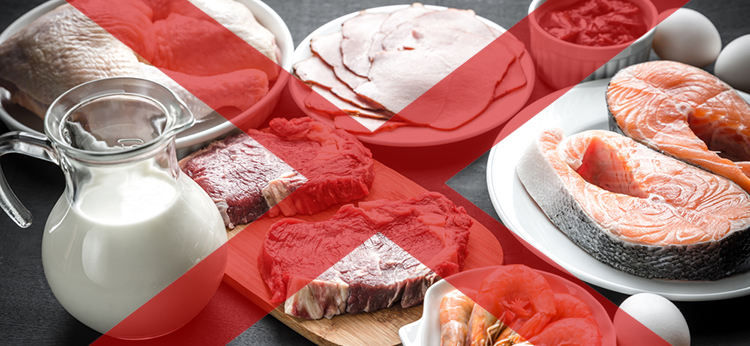
When preparing a salad, oil can be replaced with marinade or lemon juice. Some vegetables are quite juicy on their own and do not require additional dressing. Products containing eggs can be replaced with special analogues.
Deciding to limit food, you can not overeat. Excessive consumption of food makes the whole rite meaningless. It must be remembered that this is a conscious self-restraint, and not a simple diet. Also at this time, active manifestations of negative emotions and reckless fun are prohibited. Christians remember the last days of Jesus' life, so excessive fun and dancing are not appropriate.
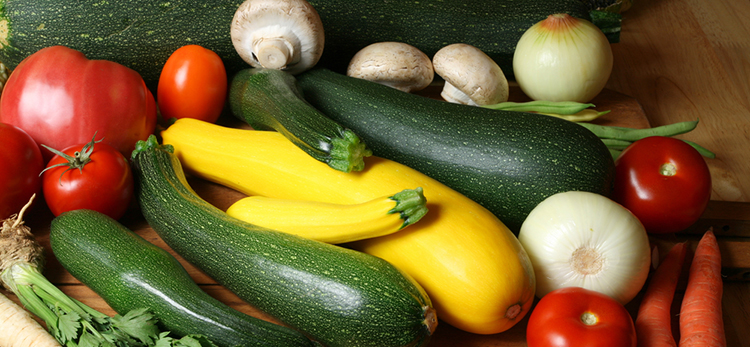
How to eat after the end of the fast
After the end of fasting, the main thing is not to introduce food of animal origin into the diet too abruptly. Digestive system weaned from her for a period of abstinence. Therefore, you need to start eating meat and dairy products little by little. With small pieces of cheese or boiled meat. It is not recommended to resume meat eating from fried foods. For starters, it is better to use boiled or steamed meat.
PGRpdiBzdHlsZT0id2lkdGg6MTAwJTttYXgtaGVpZ2h0OjIwMHB4O3BhZGRpbmc6MSUiPjwhLS0gWWFuZGV4LlJUQiBSLUEtMjMxMzg3LTEgLS0+DQo8ZGl2IGlkPSJ5YW5kZXhfcnRiX1ItQS0yMzEzODctMSI+PC9kaXY+DQo8c2NyaXB0IHR5cGU9InRleHQvamF2YXNjcmlwdCI+DQogICAgKGZ1bmN0aW9uKHcsIGQsIG4sIHMsIHQpIHsNCiAgICAgICAgd1tuXSA9IHdbbl0gfHwgW107DQogICAgICAgIHdbbl0ucHVzaChmdW5jdGlvbigpIHsNCiAgICAgICAgICAgIFlhLkNvbnRleHQuQWR2TWFuYWdlci5yZW5kZXIoew0KICAgICAgICAgICAgICAgIGJsb2NrSWQ6ICJSLUEtMjMxMzg3LTEiLA0KICAgICAgICAgICAgICAgIHJlbmRlclRvOiAieWFuZGV4X3J0Yl9SLUEtMjMxMzg3LTEiLA0KICAgICAgICAgICAgICAgIGhvcml6b250YWxBbGlnbjogZmFsc2UsDQogICAgICAgICAgICAgICAgYXN5bmM6IHRydWUNCiAgICAgICAgICAgIH0pOw0KICAgICAgICB9KTsNCiAgICAgICAgdCA9IGQuZ2V0RWxlbWVudHNCeVRhZ05hbWUoInNjcmlwdCIpWzBdOw0KICAgICAgICBzID0gZC5jcmVhdGVFbGVtZW50KCJzY3JpcHQiKTsNCiAgICAgICAgcy50eXBlID0gInRleHQvamF2YXNjcmlwdCI7DQogICAgICAgIHMuc3JjID0gIi8vYW4ueWFuZGV4LnJ1L3N5c3RlbS9jb250ZXh0LmpzIjsNCiAgICAgICAgcy5hc3luYyA9IHRydWU7DQogICAgICAgIHQucGFyZW50Tm9kZS5pbnNlcnRCZWZvcmUocywgdCk7DQogICAgfSkodGhp cywgdGhpcy5kb2N1bWVudCwgInlhbmRleENvbnRleHRBc3luY0NhbGxiYWNrcyIpOw0KPC9zY3JpcHQ+PC9kaXY+Hello dear readers. So Maslenitsa ended and Lent began. Today we will talk about what you can eat during Lent. Every year more and more people are fasting. Each person should approach fasting consciously, this is not just a “diet”, but first of all spiritual cleansing. If you are not ready to "keep the post", then you do not need to force yourself, anyway, nothing good will come of it. Still, a person must be spiritually prepared for this. I know a lot of my friends who fasted just to lose weight, especially the female half, and after a week of “such a diet”, they again allowed themselves to eat everything. To start fasting because it is fashionable is very stupid. It will only "make" the person angry and irritable. All the same, the decision to fast should be deliberate. It happens that a person fasts for the first time and it is difficult for him to immediately give up his usual products, in any case, you can consult with the Priest about “easing the fast”. Also, in case of an illness or an exacerbation of a chronic illness, a person decides to still fast, then this issue can be discussed with both his doctor and the Priest.
My wife's great-grandmother was a believing woman and observed all Orthodox fasts, including Great Lent. She said that first of all there should be faith, and only then everything else.
Lent is the longest and strictest of all Orthodox fasts. Fasting lasts 7 weeks until Easter. At the same time, while fasting, you need to pray, all this purifies the soul and allows us to think about our actions and mistakes.
During Lent, cigarettes, alcohol, meat, milk, dairy products, fish, eggs, sweets are excluded from their diet, bakery products, animal and vegetable oil.
It is allowed to eat wholemeal bread, cereals, vegetables, fruits, salted and pickled vegetables, herbs, berries, mushrooms, legumes, honey, jam, dried fruits, nuts, seeds.
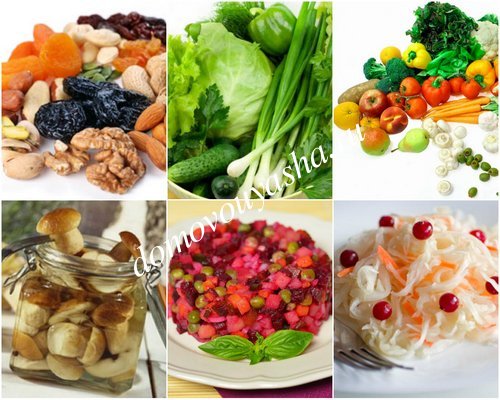
On Monday, Wednesday, Friday days of dry eating. What does it mean? These days are not allowed hot working products, as well as add to ready meals vegetable oil. You can eat black bread, fruits, vegetables, dried fruits, nuts, fruit salads drinking water.
On Tuesday and Thursday - you can eat hot food, but without adding vegetable oil. You can eat pickle, vegetable soup, cereals on the water, cereal casseroles, fruits, vegetables, you can drink compote, dried fruits, water.
On weekends, that is, on Saturday and Sunday, you can add to ready-made dishes, including heat treatment vegetable oil. Vegetable oil can be consumed on weekends and holidays.
Fish can only be eaten on holidays - the Annunciation and Palm Sunday. And in order for the fish to be divinely tasty, I propose to approach this issue with good preparation. You can bake red fish in the oven.
In fact, the menu is of course strict, but Elena’s grandmother and great-grandmother, when fasting, always cooked a variety of Tasty food. These are salads, vinaigrettes, baked potatoes, mushrooms, sauerkraut, canned and pickled cucumbers, tomatoes, zucchini, stewed vegetables or steamed, soy meat. You can eat nuts, dried fruits, fruits, vegetables, berries during Lent, now everything is simple, almost everyone has freezers and you can just defrost the berries that we prepared in the summer. You can drink dried fruits, compote, water. And what Elena remembered was that these dishes that her grandmothers cooked were so tasty and nutritious.
What can you eat during fasting, what is delicious to cook? I think this question is asked by many people who have decided to fast for themselves. I will touch on this topic on the pages of my blog, I will cook lenten dishes. I’m not ready to keep a full fast yet, but I’m already ready to limit myself in food, and I’m already practicing restrictions, and I’m ready to share with you recipes for interesting fasting dishes.
For example, I always eat breakfast in the morning oatmeal with honey, nuts, frozen berries, sometimes I add dried fruits instead of frozen berries, in summer it fresh berries and frozen in winter. I eat oatmeal without oil. I think this dish is quite suitable for fasting. I have already so accustomed my stomach to eat porridge without a single drop of oil and fat that if you suddenly want to eat at least a drop of fatty food, the stomach immediately makes itself felt with disorders. And with disorders, activated charcoal can perfectly cope. An excellent body cleanser. More about usage activated carbon you can read the article " ", published on the blog a little earlier.
You can make vegetable soup mushroom soup, soup with peas, soup with canned corn, soup with beans, lean borscht, beans in tomato sauce. Cook porridge with water. Cook potatoes, you can bake them in the oven, boil potatoes, and on days when vegetable oil is allowed, fry potatoes in oil. You can boil beets, carrots and prepare a salad, vegetables can be cut, or grated. We have recently boiled beetroot salad, with the addition of raisins, you can also add nuts, very delicious salad from beets with walnuts and with cedars. Sauerkraut, pickled and sour cucumbers, tomatoes. You can eat seeds, all kinds of nuts, dried fruits, honey and jam. All this can be eaten during fasting.
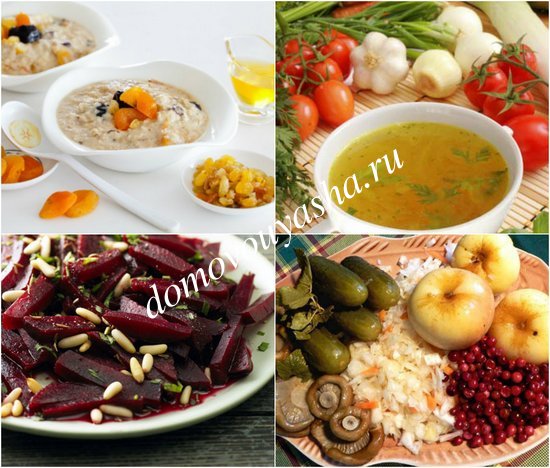
You should not overeat during fasting, eat the usual portion. Do not think that I am not hired or I do not have enough strength.
During fasting, the body is cleansed not only spiritually. The body is cleansed of toxins and toxins. Due to the fact that the diet has a lot of plant foods, which are rich in fiber. Thus, intestinal peristalsis improves, toxins and toxins are removed from the body. The metabolic processes occurring in the body are normalized, which also reduces the level of cholesterol in the blood. And according to doctors, such fasting does not reduce a person’s mental abilities.
Who is not allowed to fast.
Before you start fasting, you should consult with your doctor about this. Especially if you have chronic diseases. Everything should be for the benefit of health, and not to the detriment of one's health. Nobody needs such sacrifices, but first of all you yourself.
So, who is allowed not to fast:
- Pregnant women, as well as women who are planning a pregnancy.
- Nursing mothers.
- Weak and seriously ill people.
- Sick people who take medication.
- People who do hard work.
- Elderly.
- Children under 14 years old.
Are you fasting? If so, please share your favorite recipe. fast food. I will be very grateful to you for the recipe, and it will help our readers who fast to diversify their menu. And remember, fasting is not a diet, but a well-thought-out action in which you need to limit yourself not only in food.
Lent is an Orthodox rite, the purpose of which is repentance. Its essence is in strict restrictions. As a result of this, the list of what you can eat in fasting is very different from our usual diet. Great Lent is strict, it is difficult to observe it, but in modern society, when we have access to fresh vegetables and fruits, as well as many products that completely replace the forbidden ones, you can fully eat even during the fasting period.
What not to eat in fasting
During Great Lent, meat, poultry and dairy products are not allowed. Fish is also on the list of prohibited foods, but it can be eaten on certain days - Lazarus Saturday, Palm Sunday and the Annunciation. These are all products of animal origin, which are sources of protein and fats necessary for the normal functioning of the body. And refusing them, you need to know that your body can take it hard. The main principle of fasting is abstinence, you should eat in accordance with this principle - following the restrictions, not allowing yourself excesses.
What can you eat in fasting
You can eat everything in a post herbal products, it is not only vegetables and fruits, but also many products that are now being produced, such as cookies, juices, soy dishes, and even some types of candy and chocolate. The main food, of course, will be vegetables. It can be the usual potatoes, cabbage, beets and carrots. Cooked traditionally - boiled or stewed, the usual vinaigrette or soup, they can quickly get bored, especially if there are children in the house, as kids can hardly stand the monotony and miss the usual tasty and variety of dishes. You can innovate your diet by making vegetable cutlets or a salad dressed with vegetable oil. You can include new ingredients in familiar dishes - add herbs, spices, mushrooms, nuts or dried fruits. You can also diversify with new foods, at this time you can try chickpeas (belonging to the legume family, but it tastes different from peas or beans), arugula, spinach, broccoli or soy products.
Also in the post you can eat cereals: rice, buckwheat, pearl barley, millet, without adding butter, boiled in water. If, without oil, porridge seems completely tasteless, you can add margarine or spread to it, since it is not a dairy product, dried fruits or jam. You can add onions and mushrooms to unsweetened buckwheat porridge. Also an option for breakfast can be corn flakes or muesli with juice instead of milk. You can also eat pasta seasoned with tomato sauce or pesto.
Can be eaten in fasting vegetable soups as well as frozen vegetable mixes, homemade pickles - sauerkraut, salted and pickled cucumbers, vegetable caviar, jam and compotes. You can find lean products in stores and cafes, most often they have the inscription “lean” or “you can eat in fasting”, you can also find such products yourself in stores by reading the composition. It should not contain products of animal origin (meat, milk, butter) and a large number sugar (after all, you need to eat in moderation). For example, instead of milk chocolate you can take bitter, and instead of biscuit cookies, choose oatmeal. If you want to learn new unusual recipes, you can look into the vegan cuisine. A vegan diet is similar to a lean diet in that it also eliminates all animal products, and you can easily find it on the Internet. interesting recipes, for example orange muffins in sunflower oil.
Remember that even during the fasting period it is important to maintain the body, and eat foods that are a source of protein (these are mainly legumes and mushrooms), fats (vegetable oil) and glucose (for example, bananas, raisins, dried apricots). Thanks to proper, moderate and balanced nutrition, your body will be able to tolerate any physical and mental stress well.


